

Matt Campbell
2026 Hyundai Tucson Hybrid review
24 Hours Ago
The second-generation Outlander Plug-in Hybrid EV offers a good electric range and plenty of punch, but it's no bargain-basement model.
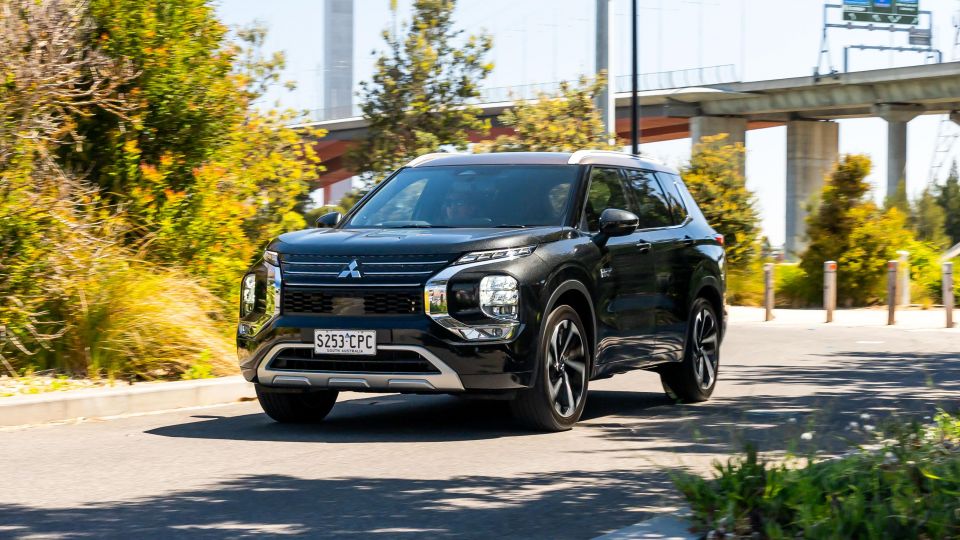
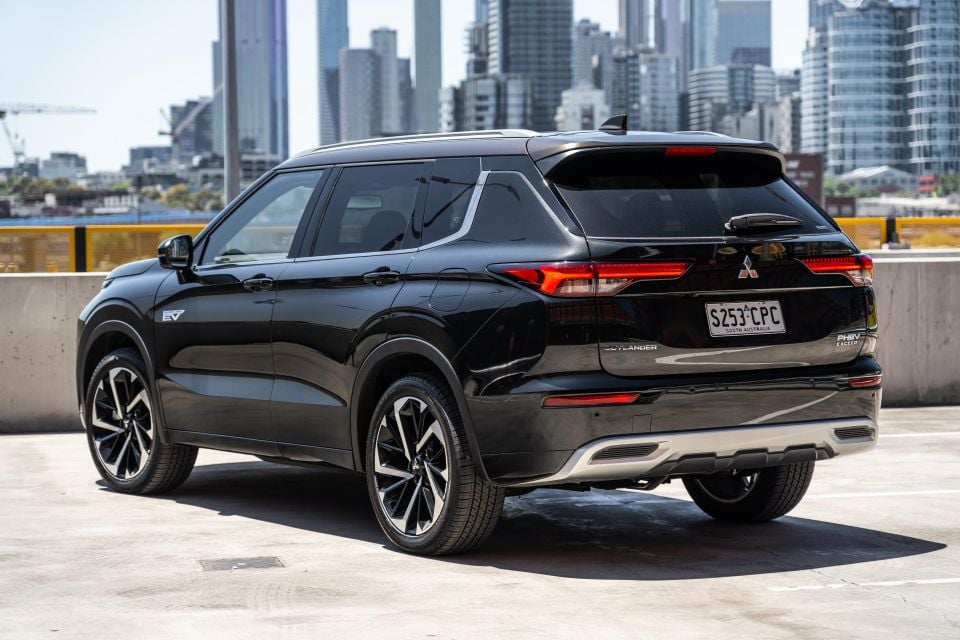

Quickly see how this car stacks up against its competition. Select any benchmark to see more details.
Where expert car reviews meet expert car buying – CarExpert gives you trusted advice, personalised service and real savings on your next new car.
Mitsubishi established itself as a plug-in hybrid SUV leader with the first-generation Outlander PHEV, which hit the market almost a decade ago.

Since then the market for electrified vehicles of all sorts has grown dramatically, yet customer sentiment clearly favours full-electric vehicles (EVs) and regular hybrids.
EV sales in 2022 across Australia tallied 33,410 units, while regular (Toyota-style) hybrids found 81,786 buyers. PHEVs however languished with just 5937 sales.
Regardless, Mitsubishi remains committed to its bridging technology, designed to offer the best aspects of these other two drivetrains in one – daily zero-emissions EV capability via a wall plug, coupled with a petrol engine-generator for longer trips.
This new-generation Outlander PHEV offers more electric range than its predecessor, punchier performance, and flashier interior and exterior designs. – plus vehicle-to-home discharge functionality.
But, there’s also a higher price tag for the privilege, especially in this top-spec grade.
There are four specification levels for the Outlander Plug-in Hybrid EV (PHEV), which is good considering some competitor vehicles only offer their electrified engines in top-of-the-range variants.
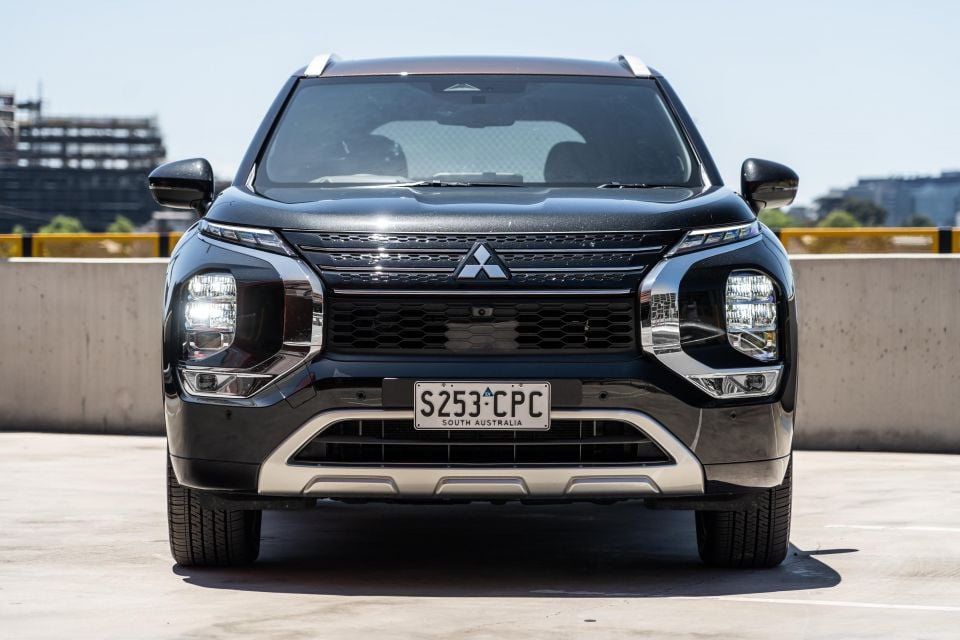
While our test vehicle was a 2022 model, Mitsubishi introduced a mild update for the 2023 year headlined by a few driver-assist system alongside price rises of between $900 and $1500.
Pricing for the 2023 Mitsubishi Outlander PHEV range is as follows, with our flagship Exceed Tourer PHEV test car’s latest price in bold.
2023 Mitsubishi Outlander Plug-in Hybrid EV pricing:
Prices exclude on-road costs
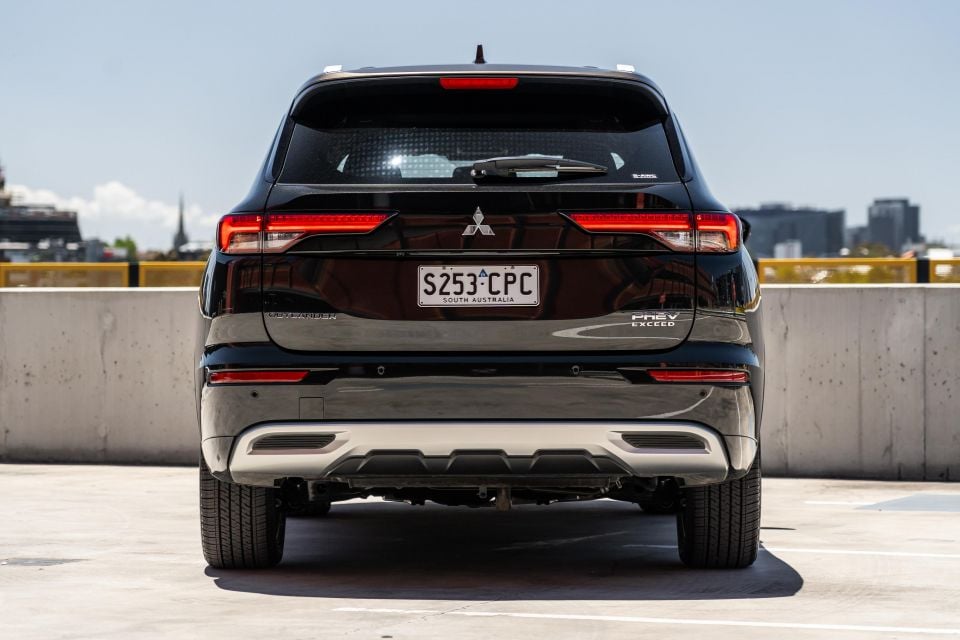
At $69,990 before on-road costs, our tested Outlander PHEV is a whopping $16,500 more expensive than an Outlander Exceed Tourer with the regular petrol engine option.
Its list price lines up with the fully electric Tesla Model Y ($72,300), as well as the new-to-market Mazda CX-60 PHEV (from $72,300). This being said, the Exceed Tourer offers a lower sticker price than the similarly sized Kia Sorento GT-Line PHEV ($81,080) and the more luxurious Lexus NX450h+ ($88,323).
In my opinion, the Outlander plug-in hybrid’s strongest value proposition is actually at the bottom end of the range.
The $55,490 Outlander PHEV ES costs the same as a more luxurious but technologically less advanced Toyota RAV4 Edge Hybrid, and makes up for missing some features by offering daily EV range – unlike the less capable RAV4 which cannot offer such a function.
Buy your new car without the stress. It's fast, simple and completely free.

Great service from Travis and team, second time I have used this business would not hesitate to recommend them to anyone
Craig C.
Purchased a Ford Ranger in Sunshine Coast, QLD
CarExpert helped Craig save thousands on his Ford Ranger, now let us save you on your next new car.
Find a dealThe interior is a big step up over the old Outlander in terms of design and feel, although I’m personally not sold on the orange used on the dash, doors, console, and seats. Design is subjective!
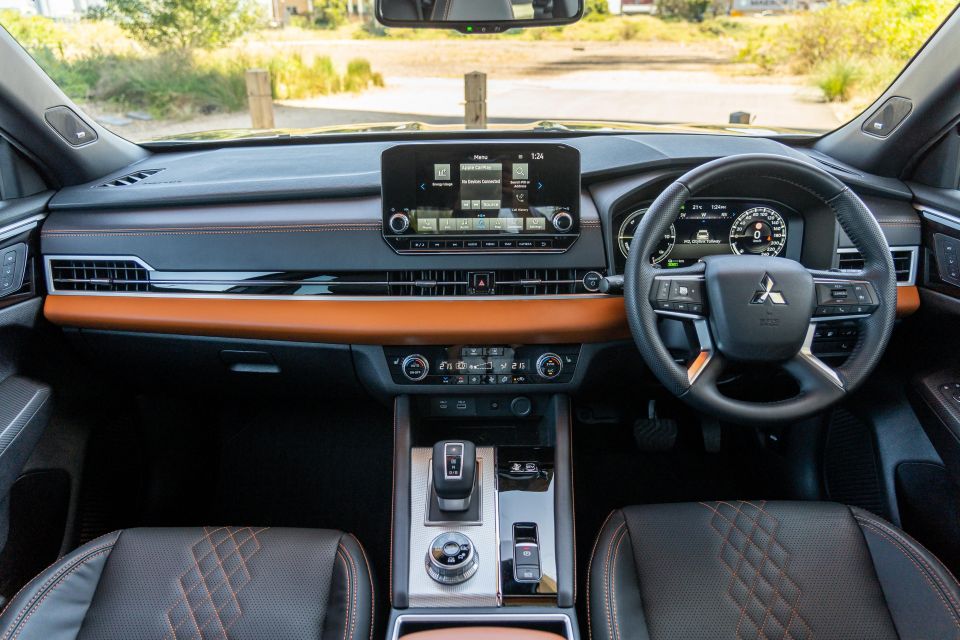
The front (memory) seats are heated and powered, and the driver gets a cool massage function, while the wheel offers plenty of adjustment and the digital instrument cluster has myriad screen options and high-quality graphics including a real-time animation of the drivetrain operating.
That said, some more data around electricity consumption and access to a high quality phone app wouldn’t go astray…
The centre touchscreen offers a good quality 360-degree camera view for parking, as well as phone mirroring (wireless Apple CarPlay, wired Android Auto), while the Bose audio system is excellent with well-placed speakers and a nice crisp sound quality.
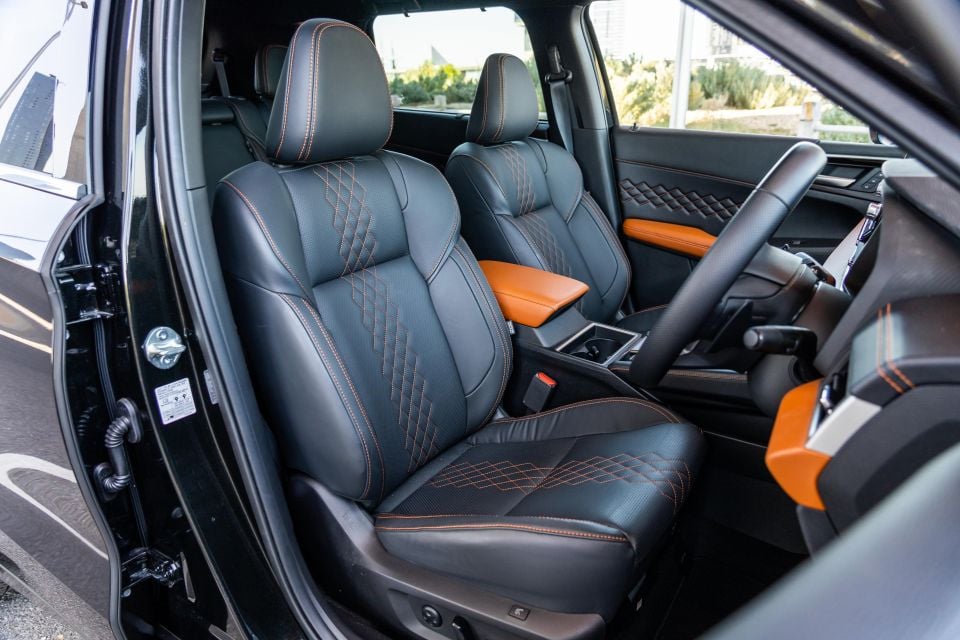

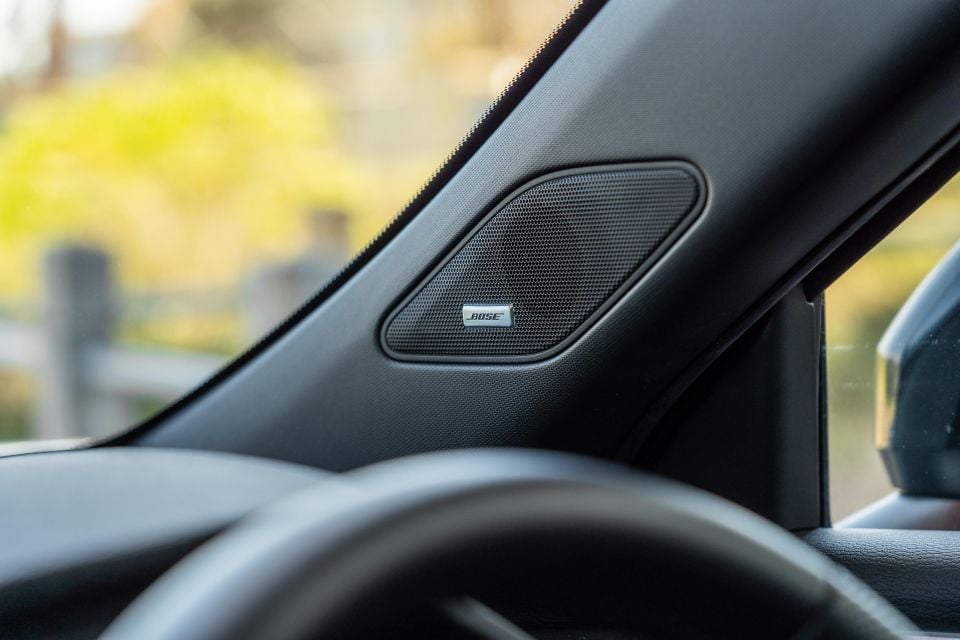
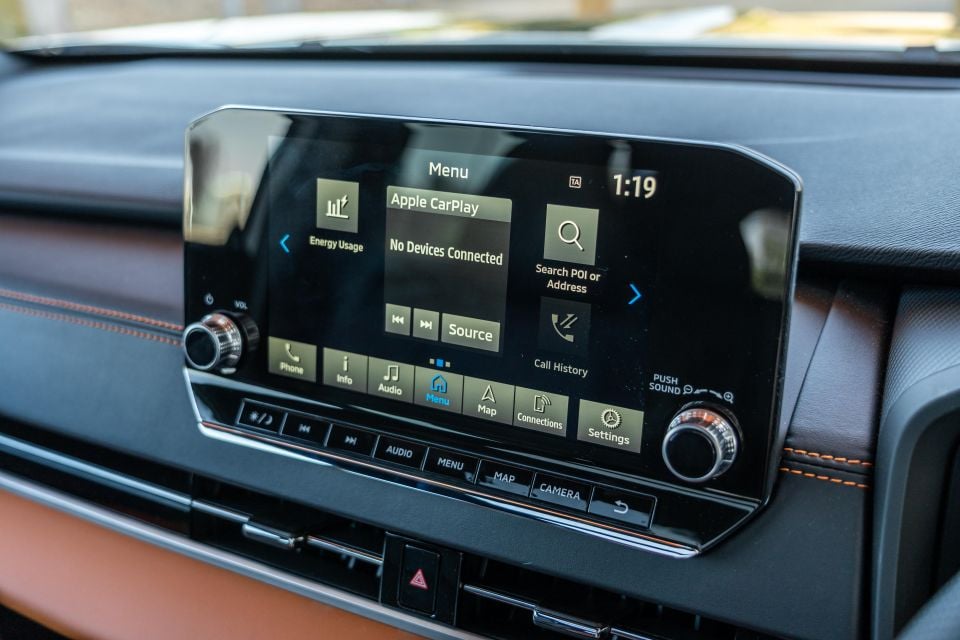
Below the centre touchscreen are simple digital climate controls, your drive and battery mode selectors, and a stubby shift-by-wire gear stick – which it must be said doesn’t always engage Drive when you think it does upon startup, as the instruments go through a start sequence.
There is a reasonable amount of storage including a rubberised charging pad ahead of the gear shifter, cupholders with teeth, a good-size glovebox, sunglasses cubby, door bins, and a glovebox.
While it’s a pleasant layout with some nicely contrasting materials scattered about, there’s too much piano black on the tunnel (a magnet for dust, scratches, smudges and sun glare) and there are still plenty of cheap-feeling hard plastics mounted lower down.
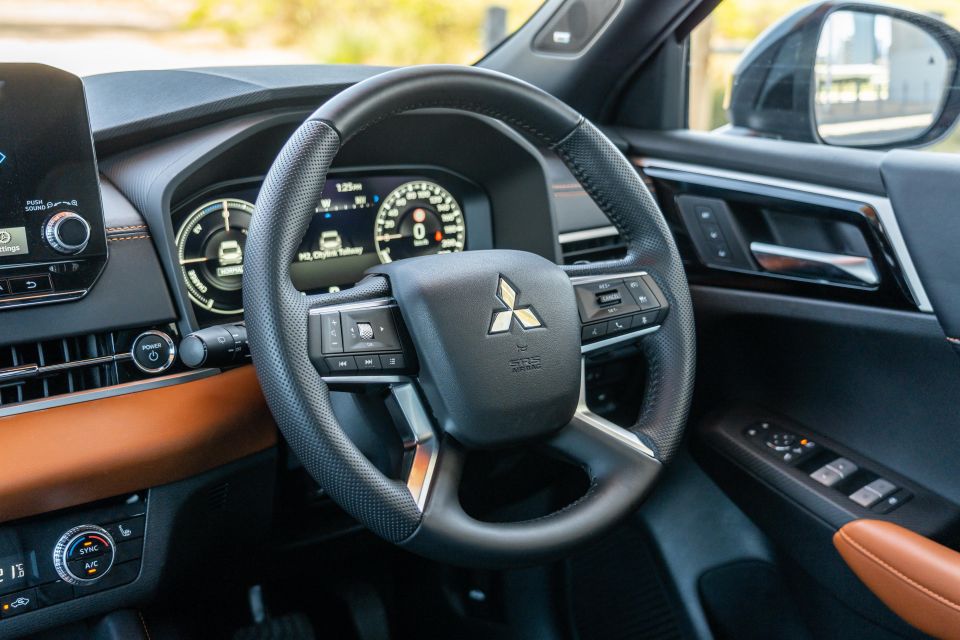
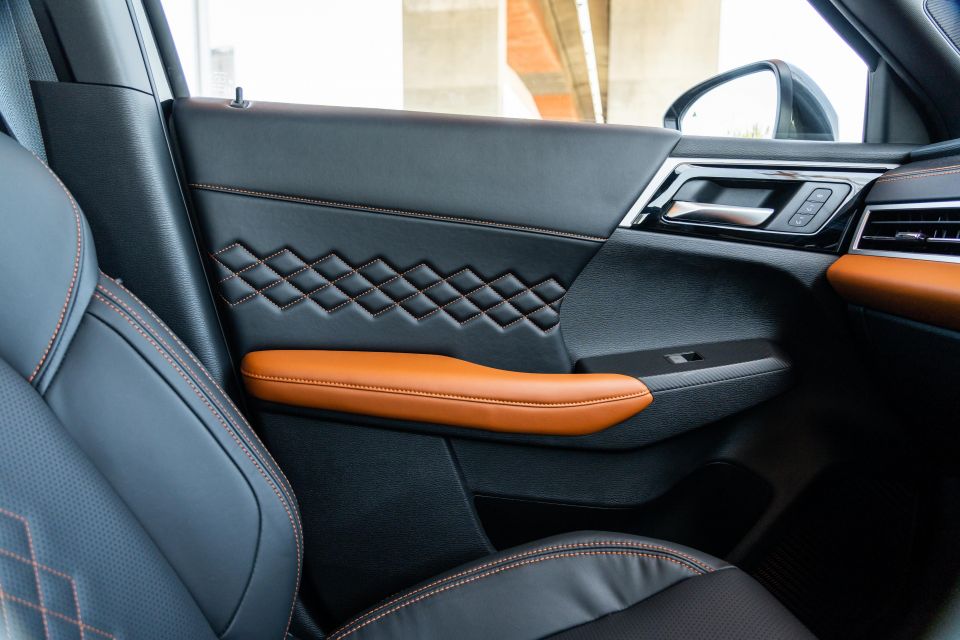

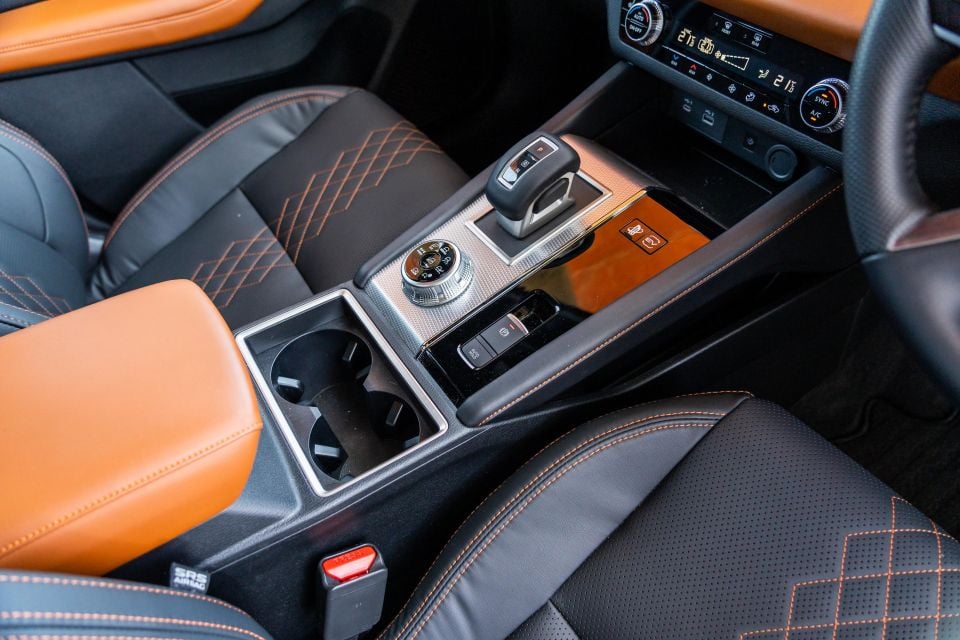
The middle seat row splits 60:40 with the larger portion on the kerb side.
The backrests recline and the bases slide, and you have amenities in the second tow such as vents, temperature controls, a ski port, USB points, and window blinds. Plus the outboard seat bases are heated.
There’s a good amount of legroom behind the front seats which have numerous pockets in them, but this model’s big sunroof does impinge on headroom. Granted I’m tall at 194cm, but my head was pushing into the roof, since the seats are mounted a little higher than up front.

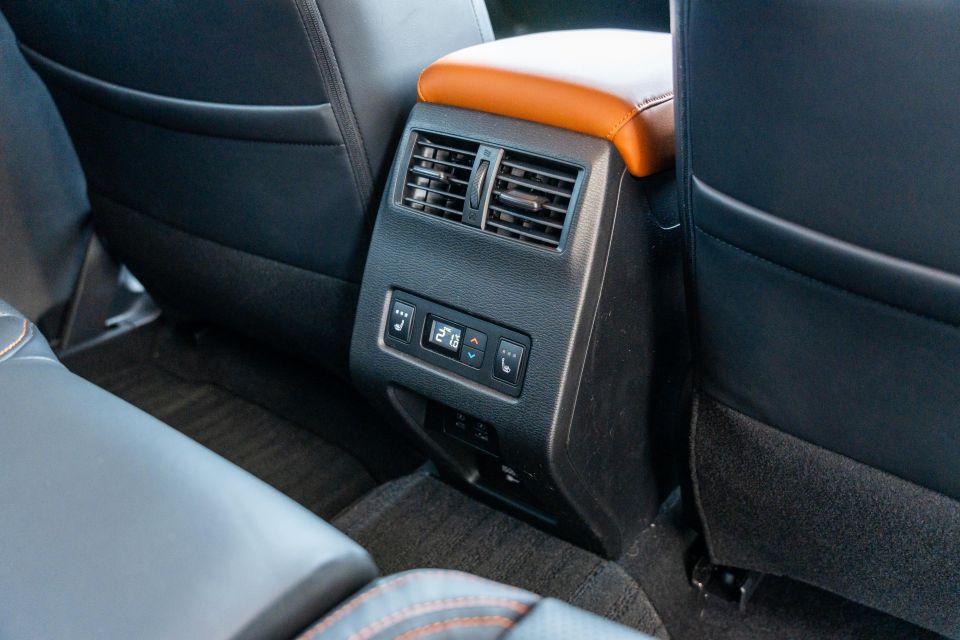
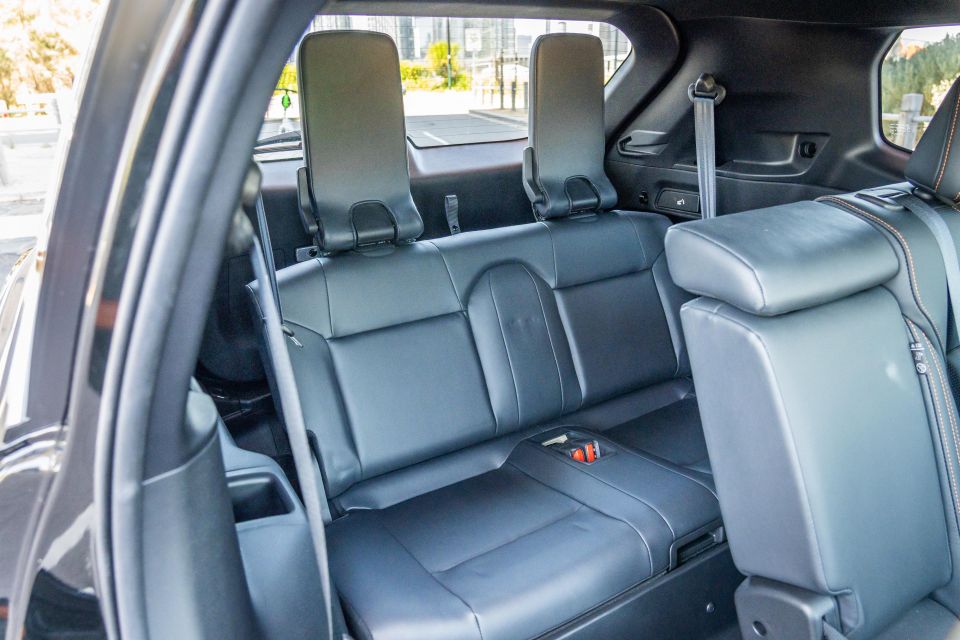
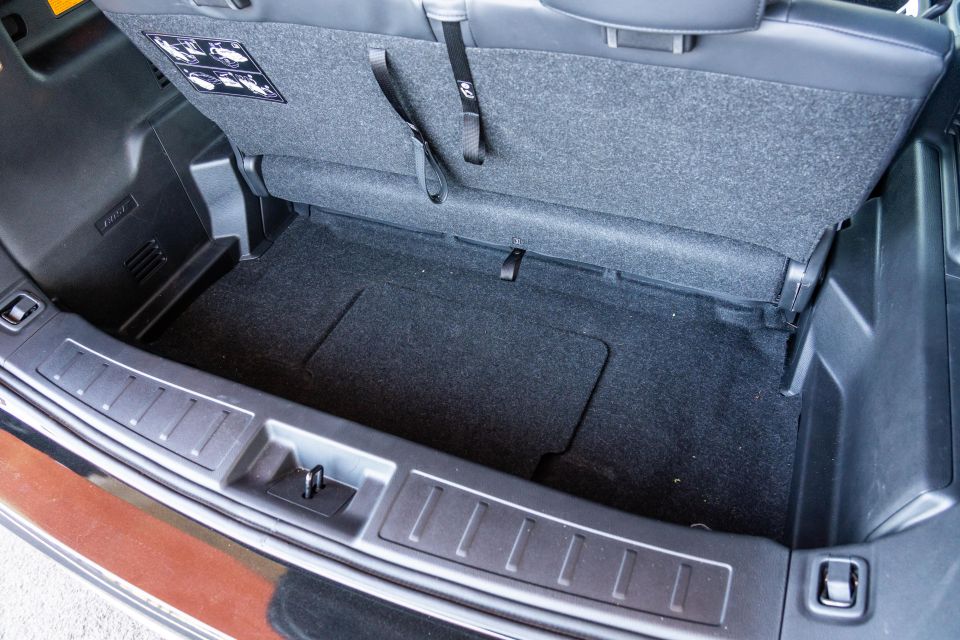
Access to the third-row is achieved via a simple seat folding mechanism on the kerbside, but space back there is very tight. Kids only, I’d say, but a handy new feature nevertheless.
Moreover, said third row packs away neatly into the floor so your boot space isn’t really hurt that much.
Access to the boot comes via a powered tailgate, and you get a rear 220V power plug, levers to flip down the middle-row seat backs, bag hooks, and a pull-out cargo cover.
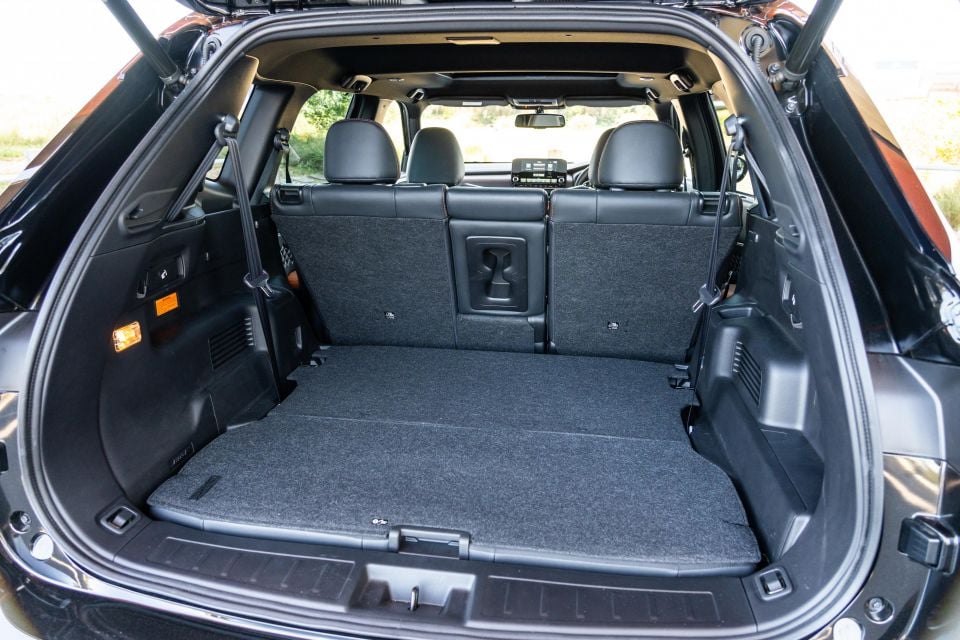

Boot capacity to the back of the second-row is a middling 461L, or 191L behind the third-row when it’s in use. With the second- and third rows folded you have a 1.7m-long loading area.
Unfortunately there is no spare tyre, just a repair kit.
Plug-in hybrids are complicated machines, more so than either EVs or normal hybrids.
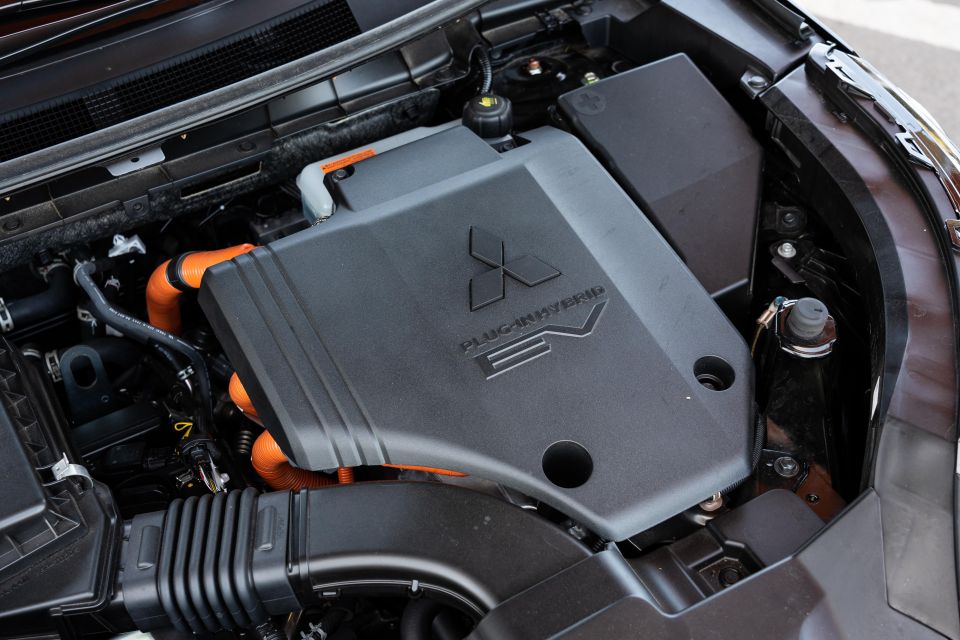
There’s an Atkinson cycle 2.4-litre petrol four-cylinder engine-generator making 98kW and dual electric motors rated respectively at 85kW and 100kW.
A single-speed transaxle is located on the front axle, rather than a traditional stepped-ratio gearbox like many PHEVs.
By having one motor on each axle, the Outlander PHEV is thereby able to drive as an electric all-wheel drive (AWD), yet the petrol engine can also hook up directly to the front wheels as well as serving as a generator.
This Mitsubishi is thereby able to function as an EV, a series hybrid, and a parallel hybrid.
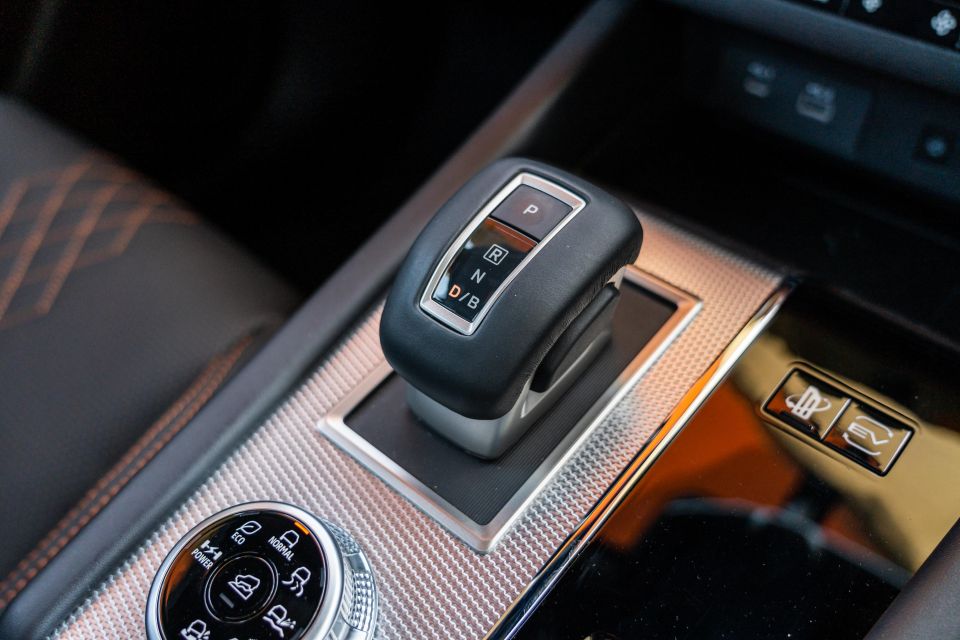
Then two motors are powered by a 350V in-floor battery rated to store 20kWh (45 per cent greater capacity than the old model), which can be recharged via a wall socket or wallbox fast charger, with ports behind a flap in the rear-right-side flank of the car.
You can even use a DC rapid charger if there’s a CHAdeMO point available. Mitsubishi sticks with this charging plug rather than migrating to the more prevalent Type 2 shape since CHAdeMO enables V2H and V2G functions, in this case up to 10kW for off-grid applications.
Combined power and torque outputs are quite good. There’s never an occasion where all three propulsion devices are running at maximum concurrently, but the system can make up to 185kW power and 450Nm torque.
At 2145kg, it’s 385kg heavier than the petrol-only Exceed Tourer grade, on account of the battery pack and motors. But an uprated gross vehicle mass means payload is largely unaffected.

Mitsubishi claims the Outlander PHEV can do an impressive 84km using only battery power, which equates to petrol efficiency of around 1.5L/100km. By contrast the old Outlander PHEV could only claim 54km.
Keep in mind that this claim is on the super-lenient NEDC testing cycle, so take it with a very large pinch of salt as I’ll detail in the next section.
To its absolute credit, Mitubishi is open about the fact the Outlander PHEV’s expected fuel use if you start with no indicated battery mileage left is actually 6.7L/100km.
With no useable charge, the PHEV reverts to being a mild hybrid with extra petrol-sapping battery weight, using regenerative braking to keep the battery in play at low speeds.
In terms of towing, Mitsubishi rates both the petrol and PHEV Outlanders to a maximum braked-trailer weight of 1600kg.
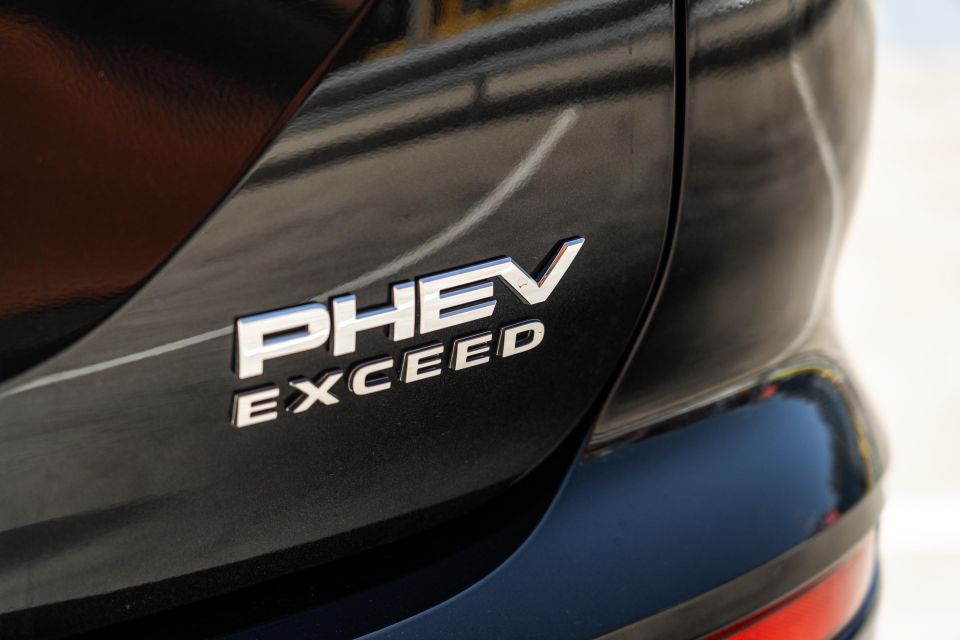
Tech Specs:
Presuming you leave your destination charged up, the vehicle in its default mode uses the battery at almost all times, only tapping into petrol power under moments of high stress – displayed by a cluster graphic showing you engine power usage rather than rev speed.
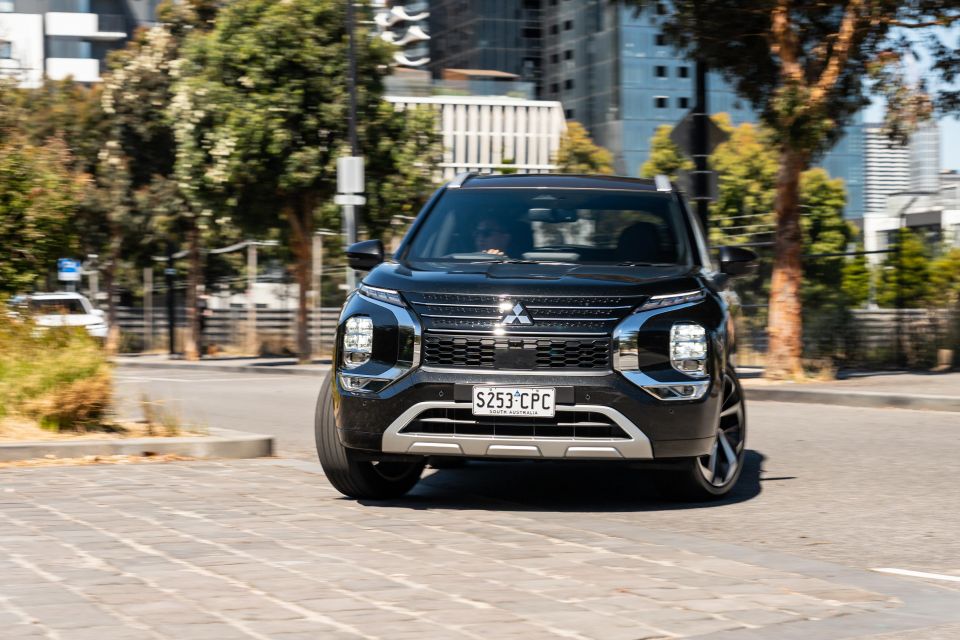
Where expert car reviews meet expert car buying – CarExpert gives you trusted advice, personalised service and real savings on your next new car.
This means that not only does the car start in silence, roll off the line in silence, and reverse in silence like a normal hybrid, but it keeps driving this way, provided you have useable charge in the battery, and is therefore a BEV more often than not when commuting.
While the 84km EV range claim is a little on the ambitious side, the Outlander PHEV still offers much more range than many others. A drive to the family farm at Christmas yielded a highway range of 73km, with the A/C on and two passengers, before using any petrol.
This is the context where the sub 2.0L/100km fuel efficiency claim has some truth to it.
On longer trips, once the battery’s useable charge is depleted, the Outlander PHEV tends to lean on the petrol engine as a generator to drive the motors like a series hybrid, with claimed fuel efficiency of 6.7L/100km. I saw mid 7s in my driving when starting sans charge, however.

This is not as efficient as a RAV4 Hybrid or most diesel SUVs on highways, meaning as with all PHEVs you need to charge the Outlander regularly to yield the efficiency benefits. If you don’t plug it in as the name suggests, then you’re seeing it at its worst.
All told over my time in the car I travelled 1050km and by generally charging overnight via my driveway three-prong wall plug yielded overall indicated economy of 4.4L/100km plus the cost of charging up the battery every other night (around $4 per 20kW in Melbourne).
What’s most impressive about the drivetrain beyond the mere numbers is its smoothness, as well as its versatility. When the petrol engine kicks in either as a generator or direct front-axle drive unit, it’s decisive and refined, thanks in part to the single-speed front transaxle.
It also hammers along nicely, with our 0-100km.h time of 7.9 seconds actually beating the manufacturer claim. While we say the PHEV commands a steep price premium, it at least offers far punchier performance than the non-PHEV Outlander as well as better efficiency.
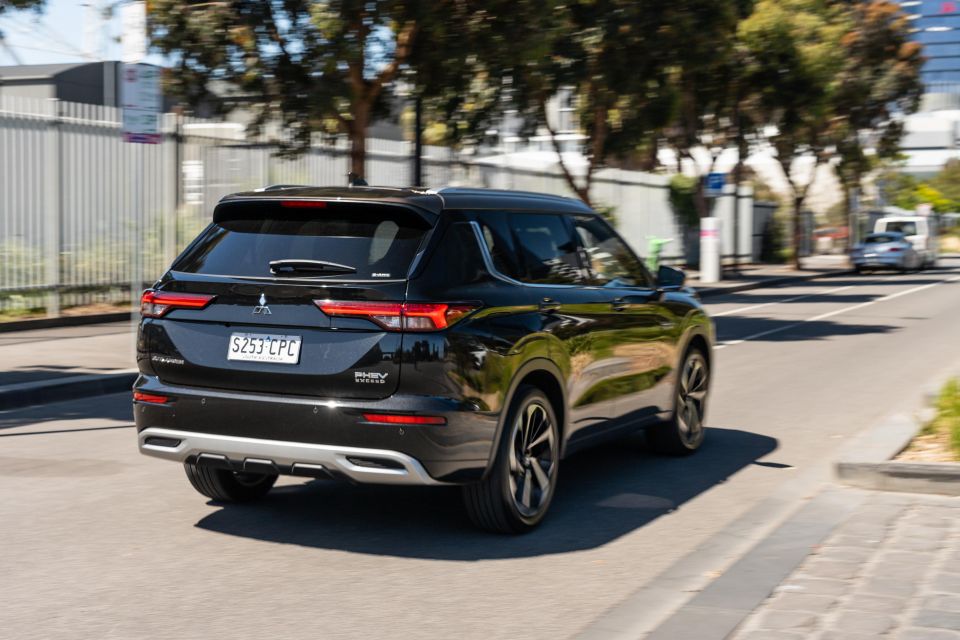
It’s also important to discuss all the different modes and drivetrain settings you can play with, beyond the default Normal setting that it starts in.
In terms of the battery you can select EV mode which uses all charge until gone without leaning on the engine even when it would be efficient to do so, as well as Save Mode (preserves your state of charge) and Charge mode (uses the engine to recharge the battery, which isn’t all that efficient).
You can also play with the regenerative braking’s charging depth or force of resistance when you hop off-throttle, all the way up to one-pedal driving – except it gives up below about 20km/h, meaning you have to engage the mechanical brakes right at the end, unless you’re using adaptive cruise control.
Finally there is a dial on the centre tunnel (obviously not a transmission or driveshaft tunnel given the transaxle and twin motors rule them out) that lets you select various torque modes such as Power, which loads up all three propulsion sources for maximum take-off.
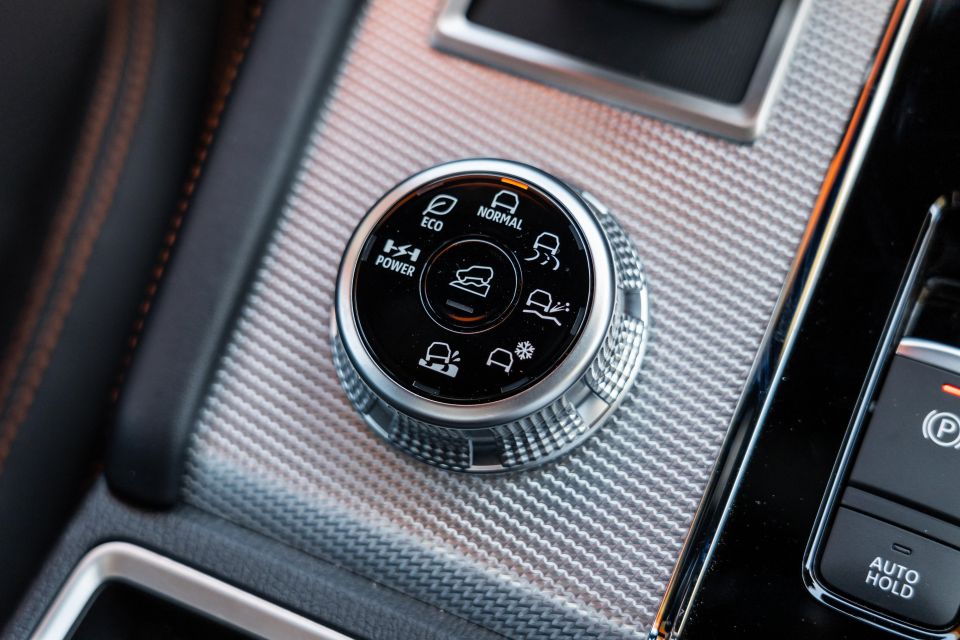
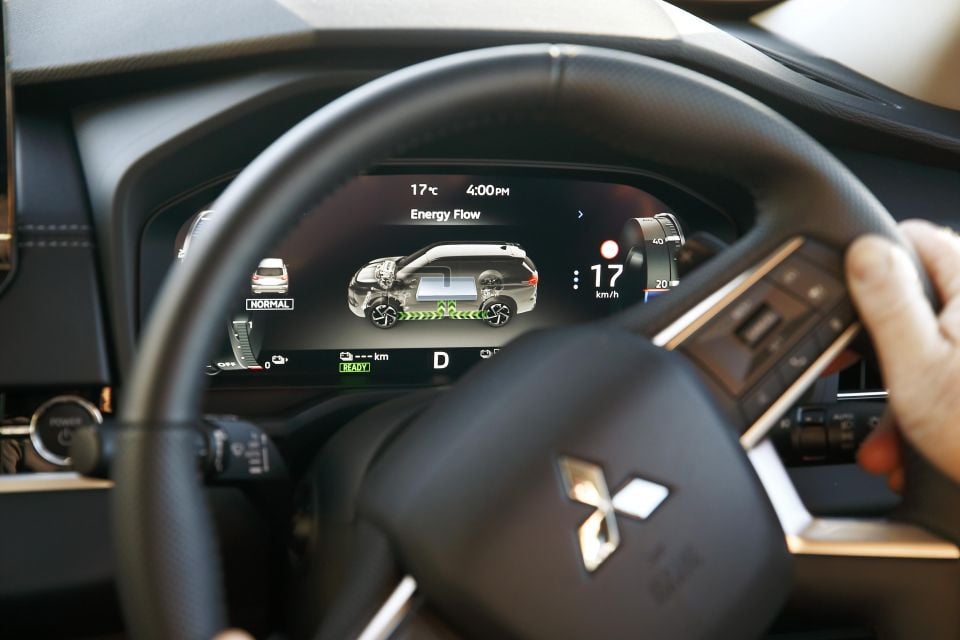
It absolutely hammers at lower speeds with rapid response that really puts the dynamic S-AWC torque vectoring system to the test, though for higher speed overtakes it clearly tapers off above 100km/h.
The dual-motor AWD system also benefits from various traction modes programmed to suit various surfaces, with the ability to channel and modulate torque as appropriate in rapid time. While not an off-roader, it’s quite a capable soft-roader.
Where it’s less impressive is in the areas of ride and handling. It feels heavy in corners, and the springs/dampers don’t control its rebound after undulations as well as they might do.
Moreover, the ride quality is quite brittle and poor over patchy roads, due to such low-profile tyres – less of an issue in the base ES model.
The feature walk across the range can be found in our 2023 Mitsubishi Outlander price and specs story here.
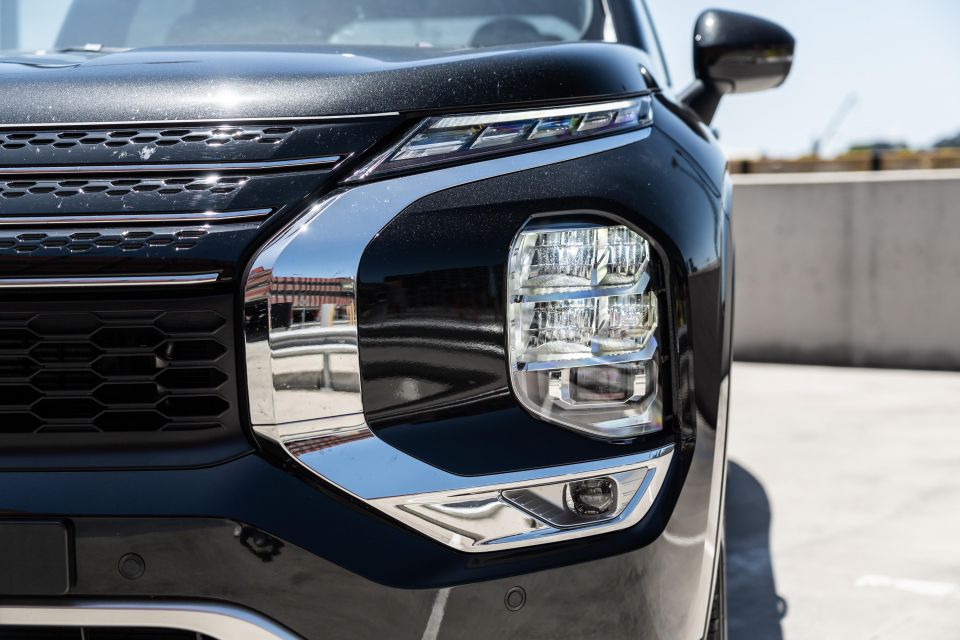



Outlander PHEV Exceed Tourer features:

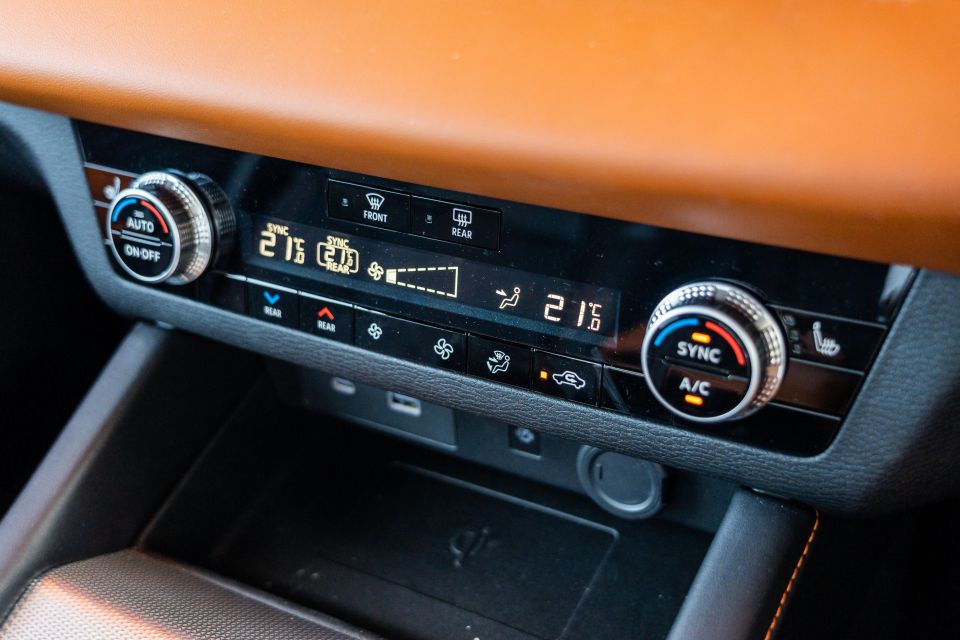
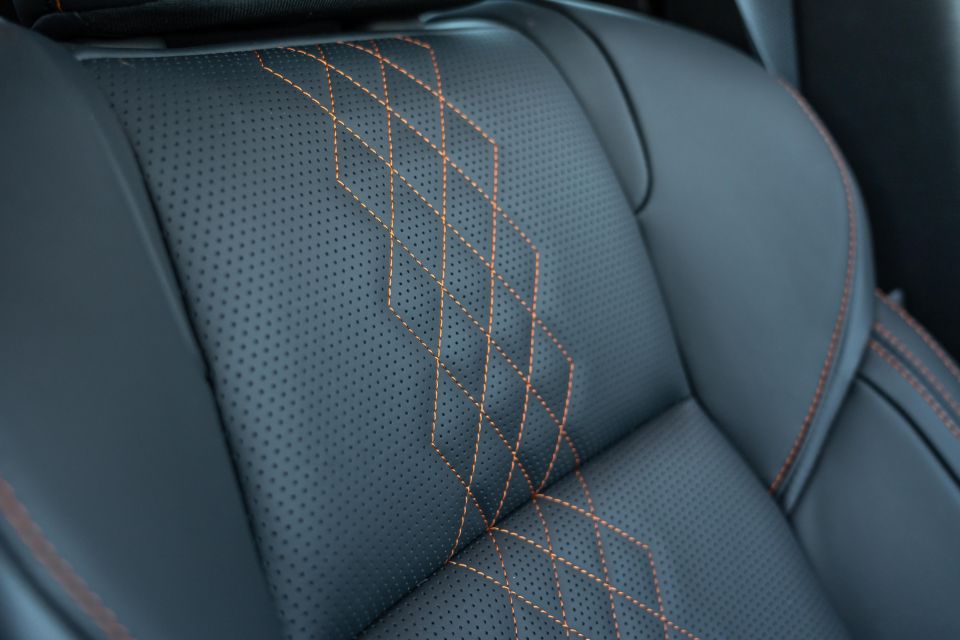
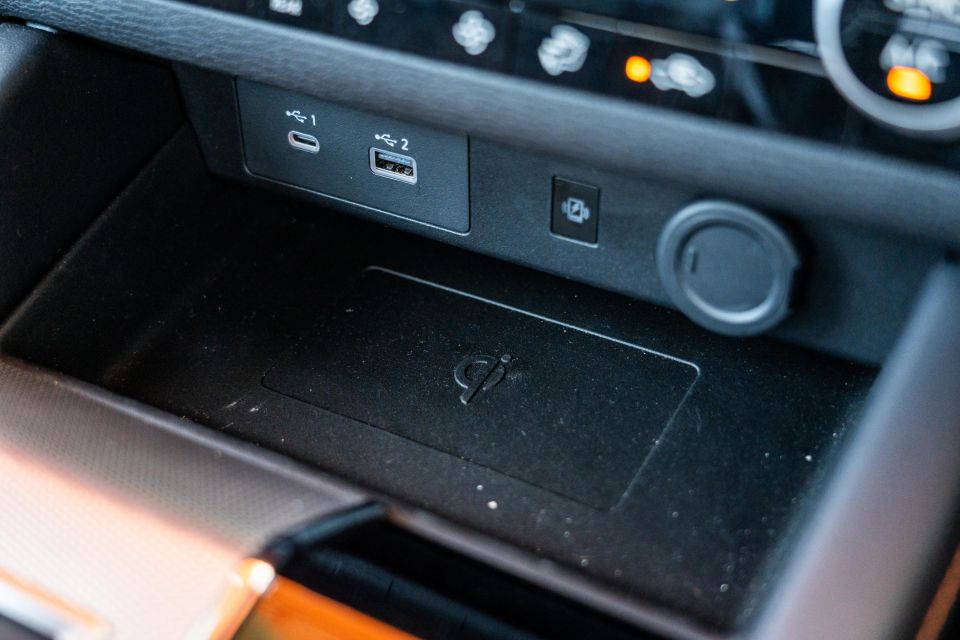
The Outlander has the requisite a five-star ANCAP safety rating based on testing conducted in 2022. It received an adult occupant protection rating of 83 per cent, a child occupant protection rating of 92 per cent, a vulnerable road user protection rating of 81 per cent, and a safety assist rating of 83 per cent.
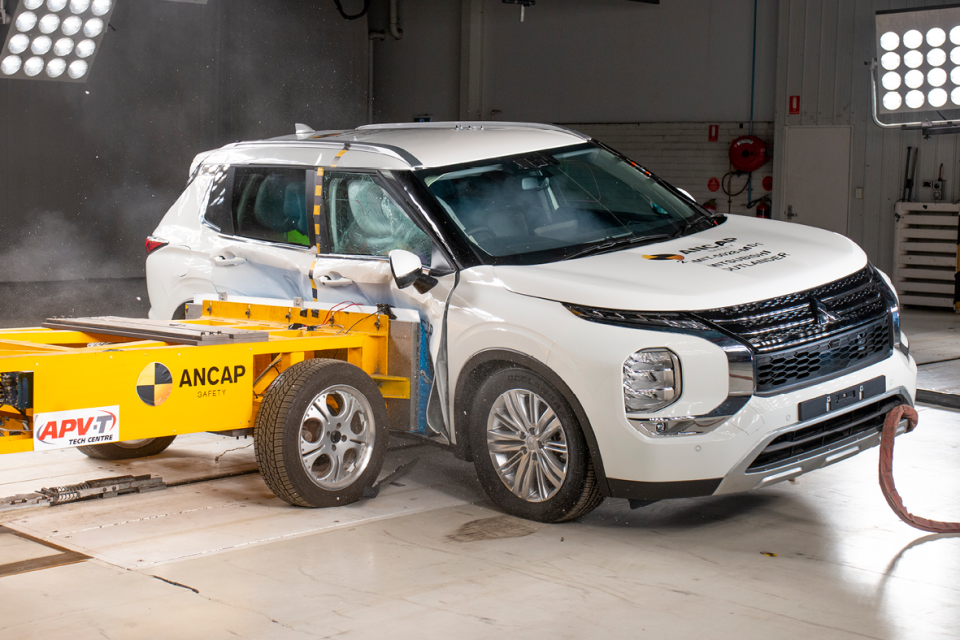
The 2023 range comes standard with the following safety features:
For 2023, the Exceed and Exceed Tourer models pick up Traffic Jam Assist (adaptive cruise control that re-engages after a complete stop), lane-keeping assist with steering controls, and an active speed limiter that matches the Outlander to the indicated speed limit.
Given the MY22 lacked steering assist for the lane-keeping aid, this is a good update.
The cost of recharging the battery is of course contingent on your source.
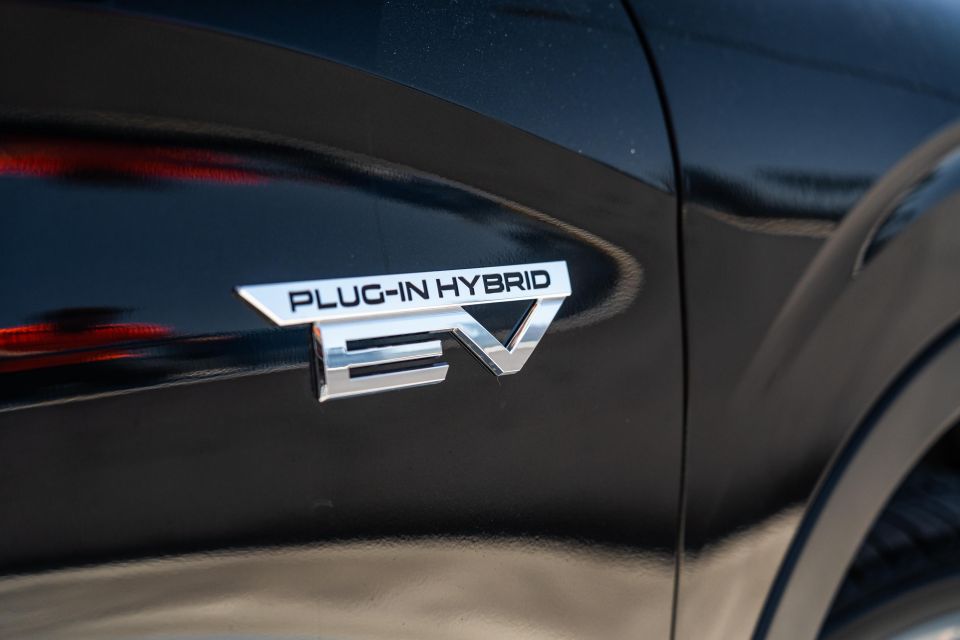
If you’re using household solar then it’s potentially free, while using Canstar Blue’s electricity price calculator, the cost to recharge the battery should be around $4 in Victoria (average power price 21c/kWh) or $5.70 in NSW (average price 28.7c/kWh) from the grid while at home.
DC public charging on-the-go usually costs about three-times as much. If you’re looking at the Outlander PHEV as a cost-saver, consider just how long it’s going to take you to make up the $16,500 price premium over the non-PHEV. Ain’t happening…
Servicing intervals are 12 months or 15,000km (whichever comes first) and there are transparent maximum prices for a decade.
The costs aren’t all that cheap, and are as follows:
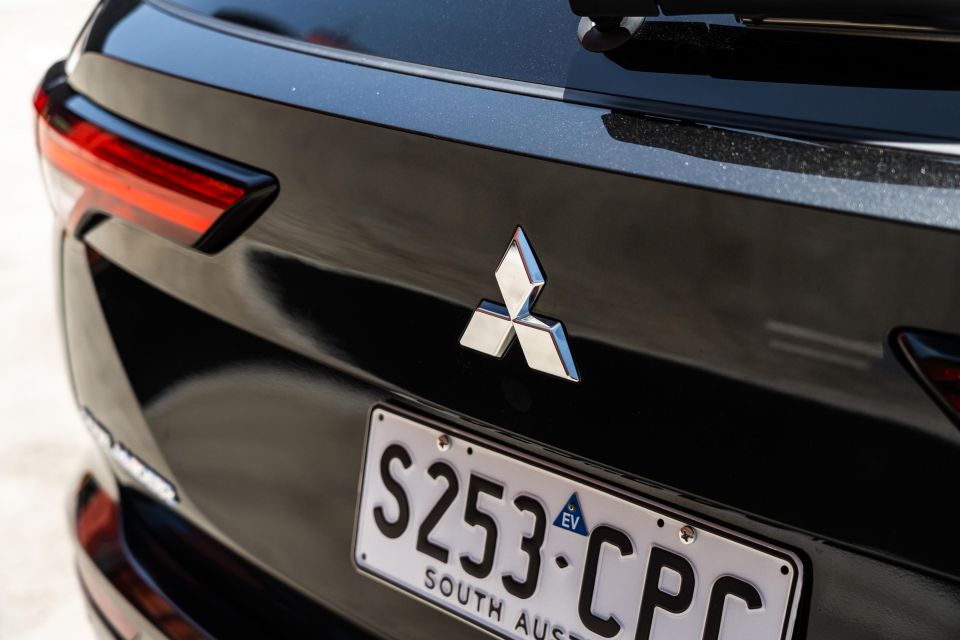
In terms of warranty, Mitsubishi’s standard cover is five years or 100,000km, but it extends your coverage to 10 years or 200,000km so long as you service your car at a franchise dealer.
The battery is warrantied for eight years or 160,000km, however the fine print stipulates that the battery will only be replaced under warranty if its retains less than 66 per cent of its original range. This figure is usually more like 80 per cent.
The final cost factor to consider is outside of Mitsubishi’s control. I live in Victoria, and here the government has a controversial road-user charge for PHEVs of 2.1 cents per kilometre, on top of paying fuel levies every time you top up the tank. Not to mention, PHEVs get none of the State rebates and tax cuts that EVs do.
As a strict number-crunching exercise, the Outlander PHEV doesn’t entirely stack up against its petrol-only siblings, and as with all plug-in hybrids it’s only more efficient than a mild hybrid with disciplined charging.
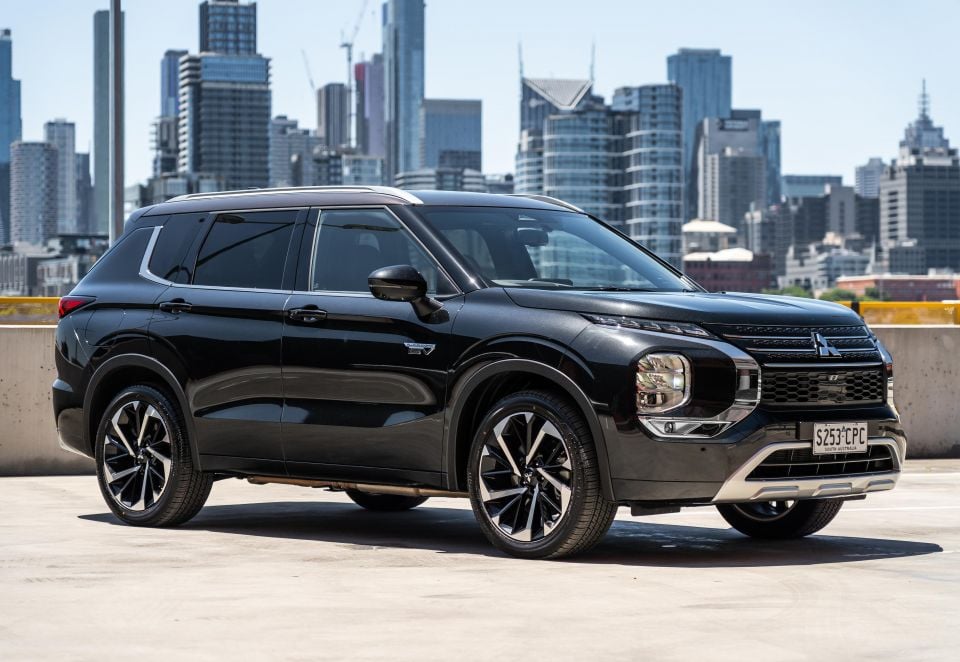
But this somewhat soulless take neglects to mention that the Outlander PHEV is just a much better car, with superior performance.
Mitsubishi has been making PHEVs for a long time, and its dual-motor system with high levels of adjustability is very impressive.
While not without other flaws, it’s an impressive machine for those who understand and appreciate its abilities – although I reckon I’d opt for a cheaper version rather than the flagship Exceed Tourer with its gauche design touches and harsh ride.
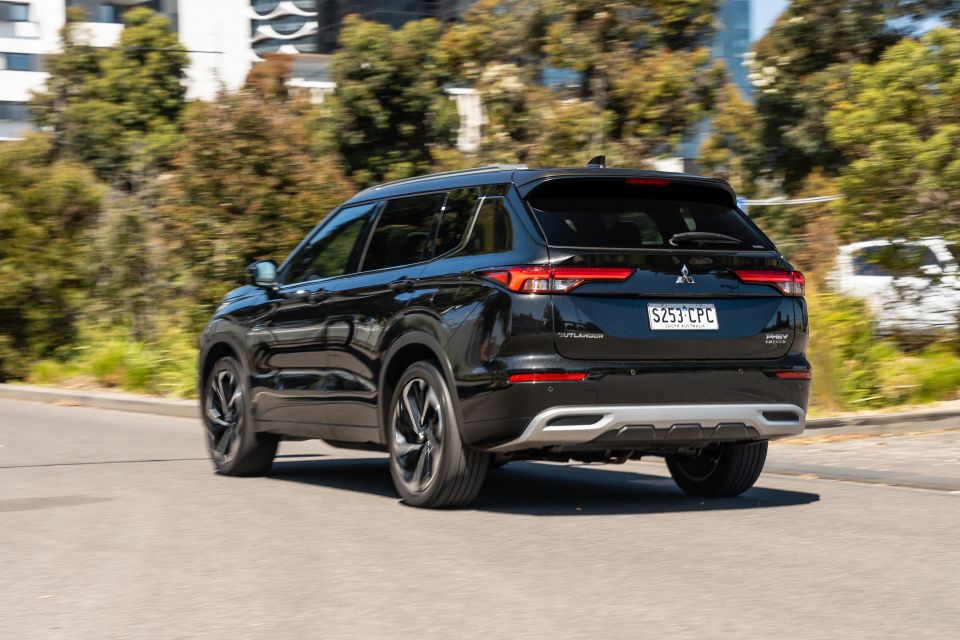
Click the images for the full gallery
MORE: Mitsubishi Outlander PHEV sold out for now, but stock on the way MORE: Everything Mitsubishi Outlander
Where expert car reviews meet expert car buying – CarExpert gives you trusted advice, personalised service and real savings on your next new car.


Matt Campbell
24 Hours Ago


Josh Nevett
4 Days Ago


Josh Nevett
6 Days Ago
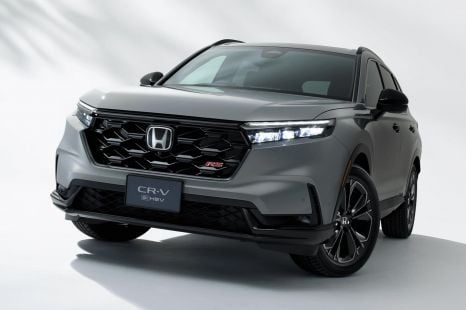

James Wong
8 Days Ago


Derek Fung
8 Days Ago


CarExpert.com.au
10 Days Ago